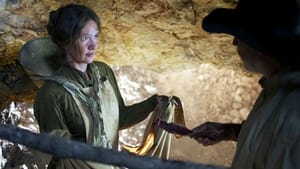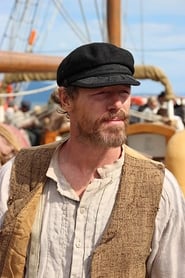Cast
View AllJasen Wade
as Levi Savage
Emily Wadley
as Elizabeth Panting
Jason Celaya
as George Padley
Natalie Blackman
as Sarah Franks
Travis Eberhard
as Albert
Bruce Newbold
as Traveler
Nathan Mitchell
as James G. Willie
Bailee Michelle Johnson
as Mary Hurren
Savanna Kylie Lewis
as Bodil Mortensen
Tomas Ambt Kofod
as Jens Nielson
Chandra Allen
as Elsie Nielson
Kimball Stinger
as Niels Nielson
David Nibley
as John Linford
Melinda Renee
as Maria Linford
Kaleb Stinger
as Joseph Linford
Crew
Director
- T.C. Christensen
Writer
- T.C. Christensen
Producer
- Ron Tanner
- T.C. Christensen
Reviews
Charles Tatum
I am not familiar with the history of the Church of Jesus Christ of Latter-Day Saints and their hardship-and-miracle laden trek from the American Midwest to Utah in the 1850's, but I did find some merit with this scattershot film.
Levi Savage (Jasen Wade, looking like a lost Hemsworth brother) is one of 500 people who must walk to "Zion" (Salt Lake, Utah) using nothing but handcarts for their possessions. This group of Mormon pioneers features many families from Europe, and Savage himself is anxious to get back to see the son he had to leave behind years before to go on a church mission. Savage warns of the harsh trip, he witnessed the aftermath of the Donner party's failure, but he is rebuffed and quietly follows orders. The title comes from different divine miracles the poor travelers were involved in. They run the gamut from found food to people rising from the dead. An opening credit full of honesty tells us that the screenwriter combined two different treks into one story, and I assume some of the characters are fictional and/or combinations as well.
This odd credit gives way to an oddly constructed film. There is too much repetition, as Savage is shouted down in the most polite manner, followed by a miracle. The families didn't differentiate from one another, and Savage's behavior around a woman he has a crush on is cringe-worthy, and not in a romantic comedy kind of way. An emotional focus is only found in the final twenty minutes of the film, and this does include one of the most detailed "whatever happened to?" codas ever produced. The real strength here is writer/director T.C. Christensen's camera. He directs the scenes well, covering for a limited budget (no way are there 500 extras milling around in the background) nicely. The makeup done on the slowly starving pioneer folk is top notch. Christensen's cinematography is breathtaking. The film is crystal clear and beautifully lit, with appropriately harsh winter scenes that gave me literal chills (I'm a North Dakotan, I's knows abouts the cold winters). Pessimists might argue that one major missing miracle is the assurance that all the travelers would arrive alive, and this bothered me, too.
"17 Miracles" is mild and nice to look at, and Wade rises above the rest of the cast, aside from Travis Eberhard as an overly adorable little person. No harm comes from watching this film.
Dec 30, 2024
Thematic Analysis
As a dramatic work, 17 Miracles examines complex human relationships and emotional struggles against the backdrop of contemporary challenges that mirror our own experiences. The character development particularly stands out, offering viewers a chance to reflect on their own life journeys.
Director T.C. Christensen brings their distinctive visual style to this film, continuing their exploration of themes seen in their previous works while adding new elements. Their approach to character development and emotional depth creates a viewing experience that rewards close attention.
Released in 2011, the film exists within a cultural context that continues to evolve with our understanding of its themes. Its reception demonstrates the diverse reactions to its artistic choices and its place in cinema history.
Did You Know?
- The production of 17 Miracles took approximately 25 months from pre-production to final cut.
- The final cut of the film runs for 113 minutes, though the director's initial assembly was reportedly 158 minutes long.
- Several scenes were filmed in multiple locations to capture the perfect setting.
- The cast underwent specialized training for 2 weeks before filming began.
- The screenplay went through 12 major revisions before the final shooting script was approved.
Historical Context
- In 2011, when this film is released:
- Climate change awareness was becoming a central global concern.
- Smartphones and social media had transformed daily life and communication.
- Streaming platforms were disrupting traditional distribution models and changing how audiences consumed films.
How This Film Stands Out
While 17 Miracles shares thematic elements with other films in its genre, it distinguishes itself through its unique approach to storytelling, visual style, and character development.
Unlike Billion Dollar Spy, which takes a more conventional approach to its subject matter, 17 Miracles subverts genre expectations by exploring its themes with greater nuance.
While films like Prayers for Bobby and Molokai: la isla maldita explore similar territory, 17 Miracles stands apart through its deeper exploration of its central themes and more complex characterization.
This film's unique contribution to cinema lies in its thoughtful balance of entertainment value and thematic depth, making it a valuable addition to its genre.
Details
- Release Date: June 3, 2011
- Runtime: 1h 53m
Where to Watch




















